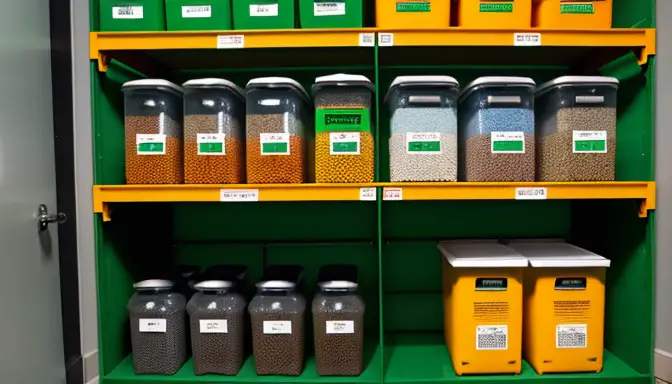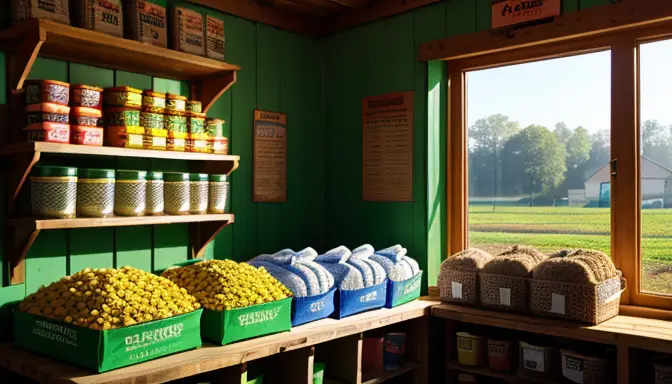When it comes to fertilizers, having foresight can make all the difference in ensuring your plants receive the nutrients they need to thrive. Understanding the shelf life of fertilizers and implementing proper storage techniques are key to maintaining their effectiveness. Let’s dive into the world of fertilizers and discover how you can keep them potent and beneficial for your plants.
Understanding Shelf Life of Fertilizers
When it comes to fertilizers, understanding their shelf life is crucial for ensuring maximum effectiveness in your gardening efforts.
By grasping the concept of shelf life, you can make informed decisions on when to use or replace your fertilizers.The shelf life of fertilizers can vary depending on several factors, including their composition, packaging, and storage conditions..
Factors that influence the shelf life of fertilizers include exposure to moisture, temperature fluctuations, and the presence of contaminants. It’s essential to store fertilizers in a cool, dry place away from direct sunlight to preserve their quality. Additionally, avoiding extreme temperatures and humidity levels can help extend the shelf life of your fertilizers.
One way to determine if a fertilizer is still viable for use is to check for any visible signs of degradation, such as clumping, discoloration, or foul odors. Performing a simple smell or texture test can give you valuable insights into the condition of your fertilizer and whether it is still potent enough to benefit your plants.

Optimal Storage Conditions
When it comes to the optimal storage conditions for fertilizers, there are key factors that can significantly impact their effectiveness and longevity.
To achieve this, consider the following guidelines:Proper storage techniques play a crucial role in maintaining the nutrient content of fertilizers and ensuring they remain viable for use..
- Keep fertilizers in a cool, dry place: Excessive heat and moisture can accelerate the degradation process of fertilizers. Store them in a cool and dry environment to prevent nutrient loss.
- Avoid exposure to sunlight: Ultraviolet rays from the sun can break down the components of fertilizers, reducing their efficacy. Store fertilizers in opaque containers or shaded areas.
- Seal containers tightly: Air exposure can lead to moisture absorption and nutrient evaporation. Ensure that fertilizer containers are tightly sealed to maintain their quality.
- Separate incompatible fertilizers: Some fertilizers can react with each other when in close proximity, leading to nutrient loss or even hazardous chemical reactions. Store incompatible fertilizers separately to prevent cross-contamination.
Temperature and Humidity Control
In the realm of fertilizer storage, temperature and humidity control are like the dynamic duo, working together to ensure the longevity and efficacy of your fertilizers. Picture them as the Batman and Robin of the gardening world, swooping in to save the day and protect your precious nutrient-rich blends from degradation.
When it comes to temperature, aim to keep your fertilizers in a cool, dry place. Extreme heat can cause chemical reactions that break down the nutrients in the fertilizer, rendering it less effective. On the flip side, excessive cold can lead to moisture buildup, potentially causing clumping or caking of the product.
Humidity is
another key player in this storage saga. High humidity levels can introduce moisture into the fertilizer, leading to clumping and reducing its flowability. To combat this, consider using airtight containers or bags to create a barrier against moisture infiltration.To summarize, maintaining a balance of temperature and humidity control is paramount in preserving the quality and potency of your fertilizers. By heeding these guidelines, you can ensure that your fertilizers remain in prime condition, ready to provide your plants with the nourishment they need to flourish.
Container Selection and Maintenance
When it comes to storing fertilizers, selecting the right containers and maintaining them properly are key factors in preserving their quality and effectiveness.
Additionally, proper maintenance of these containers, such as regular cleaning and inspection for any damages, can further extend the shelf life of the fertilizers.Choosing containers that are specifically designed for storing fertilizers can help prevent contamination and ensure the longevity of the product..
Here are so
me tips for container selection and maintenance:- Opt for containers made of durable materials that are resistant to corrosion and leakage.
- Ensure the containers have tight-fitting lids to prevent moisture and air exposure.
- Label containers clearly with the type of fertilizer and the date of storage to track their shelf life.
- Store containers in a cool, dry place away from direct sunlight to maintain the integrity of the fertilizers.
By following these container selection and maintenance practices, you can ensure that your fertilizers remain potent and effective for longer periods, providing your plants with the nutrients they need for healthy growth.

